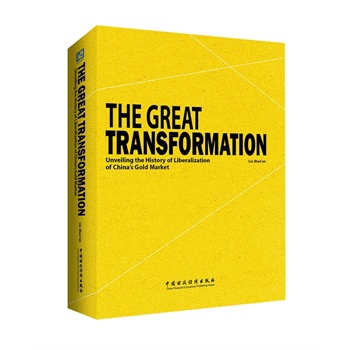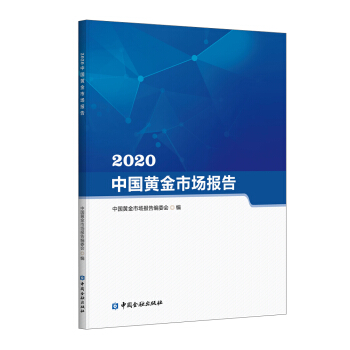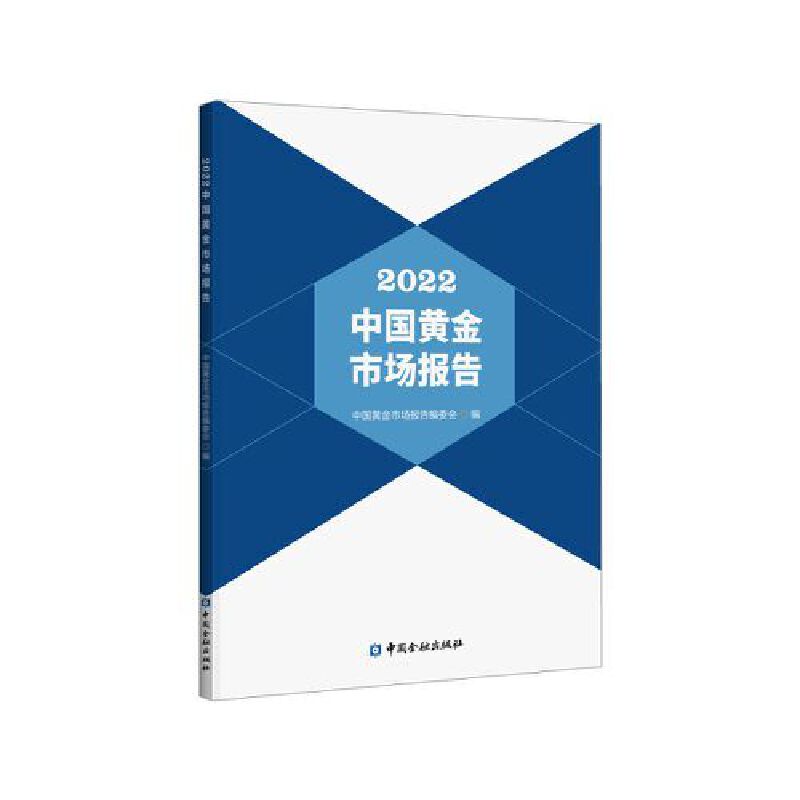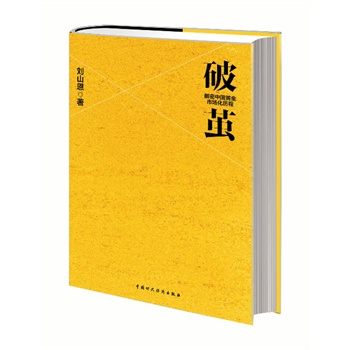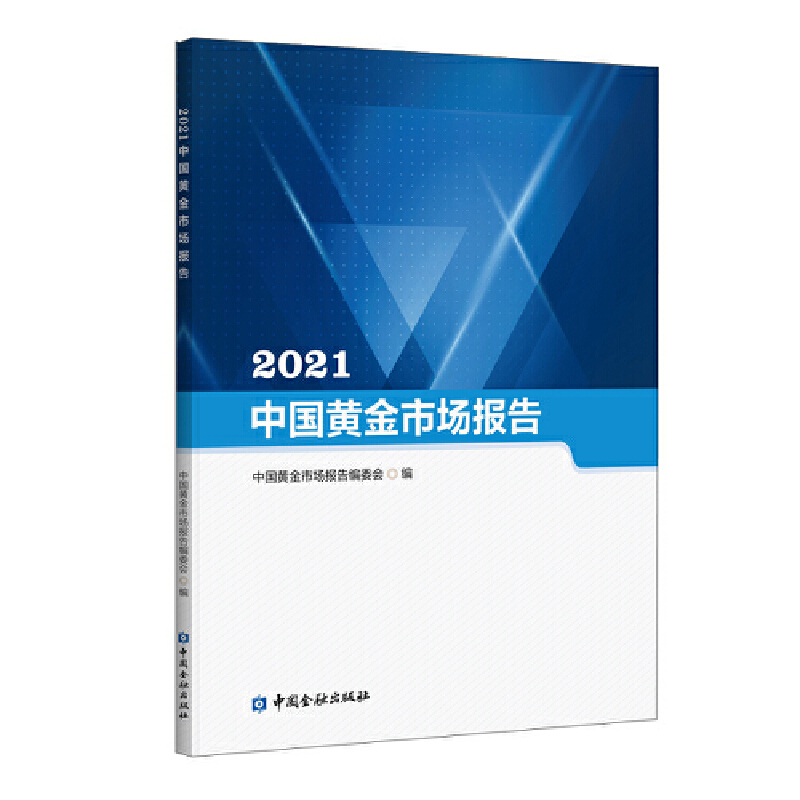

|
關(guān)于我們
 書單推薦 書單推薦 新書推薦 新書推薦 |
破繭 : 解密中國黃金市場化歷程(英文版) 
From 1993 to 2013, Chinas goldmarketization has experienced a full 20 years.This book relays via first hand insighthow the Chinese gold marketization overcame its predicament and ascended to itscurrent status.In fact, not only did China’s gold marketimprove from nearly forgettable to the world’s second largest (soon to belargest), it even revolutionized the international gold market by creating aninnovative new gold market system!If you are interested in the current orfuture status of the Chinese gold industry, do not hesitate to give this book aread.
Liu Shan'en, a senior economist. He has served as general office directorand deputy director ofNationalGoldBureauEconomicDevelopmentResearchCenter,as well as deputy editor-in-chief of "China Gold Economy". Currently,he serves as the secretary-general of the Expert Committee forBeijingGoldEconomyDevelopmentResearchCenter.
He has served as economic adviser for many companies, planned and hosteda number of national or international forums and training courses, as well aslaunching the "High-level training programs for China gold investment andtrading "and first Chinese "training courses for master of commerceand industry " by cooperating with several organizations and first Chinese"Golden Bachelor of science in economics”. He has published many papersand reports on special topics. Liu Shan'en, a senior economist. He has served as general office directorand deputy director ofNationalGoldBureauEconomicDevelopmentResearchCenter,as well as deputy editor-in-chief of "China Gold Economy". Currently,he serves as the secretary-general of the Expert Committee forBeijingGoldEconomyDevelopmentResearchCenter.
He has served as economic adviser for many companies, planned and hosteda number of national or international forums and training courses, as well aslaunching the "High-level training programs for China gold investment andtrading "and first Chinese "training courses for master of commerceand industry " by cooperating with several organizations and first Chinese"Golden Bachelor of science in economics”. He has published many papersand reports on special topics.
He is one of the few experts who tracked and studied the whole process ofthe marketization of gold in our country. He first voiced the need ofmarket-oriented reforms of the gold trading. His relevant academic points ofview are of great influence in society and very foresighted, along with a lotof theoretical achievements.
Introduction
Chapter One EconomicPerspectives Gold Control: AMonetary Policy Gold Control inChina: A Historic Overview Deng Xiaoping’sCommitment to Reform and Socialist Market Economy Chapter Two ARemote Town Fired First Shot in Gold Management Reform Ganwang Town’sAttempt to Break Institutional Constraints on Gold Market 1993: TheStarting Year of the Market-oriented Reform of Gold Management System Interpretationof the Official Written Reply No. 63 of the State Council Chapter Three Rebuildingand Restructuring of Structure of Interests Underlying Causeof Change in Structure of Interests: Gold Price Adjustment Reform Momentumwas Waning in a 6-year Period Introduction
Chapter One EconomicPerspectives Gold Control: AMonetary Policy Gold Control inChina: A Historic Overview Deng Xiaoping’sCommitment to Reform and Socialist Market Economy
Chapter Two ARemote Town Fired First Shot in Gold Management Reform Ganwang Town’sAttempt to Break Institutional Constraints on Gold Market 1993: TheStarting Year of the Market-oriented Reform of Gold Management System Interpretationof the Official Written Reply No. 63 of the State Council
Chapter Three Rebuildingand Restructuring of Structure of Interests Underlying Causeof Change in Structure of Interests: Gold Price Adjustment Reform Momentumwas Waning in a 6-year Period Struggling forSurvival: Reform of the Management System in Gold Industry Restructuring ofGold Jewelry Industry PBOC’sTransformation from the Defenders of Old System to the Reformer
Chapter Four Start Everything from Zero 1999:Reactivation of Market-Oriented Reform of Gold Management System Gold asCommodity versus Gold as Special Resource Winding Path ofAdvancement, and Marching on in the Changes SignificantAdjustment in Reform Appeals Shift inTaxation System of Gold Trading “TaxationDepression”: A Strategic Choice of the State An InternationalTroop in the Reform Progress
Chapter Five ADevelopment Path from Unitary to Diversity Continuation ofHistory and Starting Point in Reality Choice of aUnified Market Approach in Gold Market Development Proceeding inthe Unified Market Approach and its Termination Futures: ARevolution of the Gold Market From Unified toDiversified Gold Market
Chapter Six StridingTowards a New Height in Development A New Height inthe Liberalization of Gold Who can Reignover the Diversified Market Innovation:Source of Development of Gold Market Dilemmas ofInnovation Encountered by the Shanghai Gold Exchange Shanghai FuturesExchange: Enhancement of Risk Management Capabilities Offsite ExchangeMarket and Market Maker System OutdatedLegislation is the Achilles Heel of Reform
Postscript Introduction
Some people said the 21st century will be theChinese Century.Though we do not take this assertion too seriously, it isunarguable thatin the 21st century China will play a very important part in theworld,since the Chinese dream of the great revitalization of China iscomingtrue. This tremendous change of China from a poor and weak country overthe past 100 years to the engine of global economic growth in the 21st centurymust be attributed to the reform and opening-up policy initiated in the late1970s. Since then, China has embarked on the journey of building the socialistmarket economy. However, during the course of the market-oriented reform, it’snot all smooth sailing; loss of direction, twists and turns all wereexperienced. Thirty years later, when looking back we all have a specialfeeling in our heart. Remembering history does not mean going back to the oldroad; conversely, reflecting on history helps us be better prepared for thefuture. As history is a mirror to the future, learning from history enables usto have a better understanding of the current situation and keep moving in theright direction, thereby keeping us from repeating past mistakes. As an integralpart of China’s overall market-oriented reform, the liberalization of China’sgold market has undergone the two decades of progress since 1993 when the StateCouncil issued the Official Written Reply No. 63. Though the market-orientedreform of gold management system might only be a spray in the tide of reformand opening up, it is worth tracking and reviewing its development history,through which we can examine the progress of China’s great cause of reform froma special angle. The great transformation over past twenty years simulates manypeople to reflect on the whole process of this market-oriented reform. In particular,as an observer who has witnessed the whole process of this greattransformation, I have had profound reflections and insights on it. Therefore,I decide to write this book to thoroughly review and scrutinize the wholecourse of the reform of gold management system in China. At the end of1991, I joined the Economy Development Research Center of the National GoldBureau, a newly established agency and served as the director of the EconomyResearch Department. I started my career as an economy researcher on gold atthe time just before the goal of building the socialist market economy was setby the Chinese Leadership. Albeit at that time under the planned economy systemgold was still a commodity subject to the strictest state monopoly on thepurchase and distribution,the conditions for the market-oriented reform of goldmanagement system were in the process of forming. So the first research projectI undertook was the market-oriented reform of gold management system in China.I completed this project in 1992 and pioneered in researching this subjectamong Chinese scholars. Thereafter I have become both an observer and aresearcher of the whole course of the market-oriented reform of gold managementsystem in China. Over the 21-year period of the market-oriented reform of goldmanagement system, I have continuously furthered my research on this subject anddeepened my insight and understanding of the reform. During this period, I havepublished nearly 100 academic papers and research reports, completed over 30research projects, and compiled two university textbooks. All thesepublications recorded both the history the marketoriented reform of goldmanagement system in China and my thinking and explorations in this area. Alongwith the advancement of the reform, the understanding of the participants ofthe reform has ever deepened. At the beginning of the new century, I started entering the new areaof the theoretical research on gold investment market and the training of goldtrading professionals. In partnership with several universities andnon-governmental institutions, I organized and hosted a number of forums andtraining programs concerning gold market and gold investment and transaction,and helped establish China’s first MBAprogram and undergraduate program of gold economics. While conducting my economicresearch on gold, I also participated in the compilation of textbooks and theteaching work. What touched me and impressed me most is that with the advancement ofthe market-oriented reform of gold management system, our understanding of thereform has been gradually deepened. Looking back is also a part of the processof deepening our understanding. In 1993 when many people advocated themarket-oriented reform of gold management system and the shaking off of thestate monopoly on the purchase and distribution of gold, they were largely motivatedby emotion and profitmaking intention, and lacked deep thinking and adequatetheoretical preparation. As a result, the reform measures and practices wereusually the passive response to practical issues, rather than the step-by-stepimplementation of the well-formulated overall planning. Over the course of thereform, there were both successful experience and lessons of failure, advancementand retreatment. In this sense, looking back and summarizing the course of thereform is the meaningful reconsideration. In writing this book, I endeavor tothoroughly review the 21-year period of the market-oriented reform of goldmanagement system in China and further deepen our understanding of the reform. Under the traditional system of gold control, the China’s goldindustry had received the priority support from the State with the pressing needfor gold, and therefore had achieved a 20-year consistent growth since the mid1970s. It was reluctant for them to part from the traditional planned economy system, becausethis means they have to accept the loss of their vested interest and encounterthe uncertainty of the prospect of the market-oriented reform of goldmanagement system. For this reason, although many people eagerly expected theliberalization of the gold market, they were also in fear and trembling whenthe State decided to take a key step in de-regulating China’s gold market in1999. As at that time the international gold market was still in the midst of along term bear market with declining trading volume, the People’s Bank ofChina(PBOC) responsible for implementing the policy of the state monopoly on thepurchase and distribution of gold faced unprecedented tremendous pressure ofeconomic loss. In this situation, the PBOC had to take a risky move tode-regulate the gold market and change the mode of gold transaction. Surprisingly,the year 2002 in which the liberalization of China’s gold market was realizedwas also the year the secular bear market of gold came to an end and the10-year bull market of gold commenced. During this period, the gold price wassoaring and hit record highs for many times, providing the investors with moreprofit-making opportunities and thereby significantly improving marketsentiment. In addition, the outbreak of the U.S. subprime mortgage crisis in2007 caused the global financial crisis, and the outburst of the European debt crisisin 2010 triggered the global economic crisis. These crises of credit assets madegold as a highly-trusted and valuable safe asset that can effectively ward offcredit risk stand out. The people’s enthusiasmfor the gold market has been kindled. This is an important extrinsic factor infacilitating the smooth and successful liberalization of China’s gold market. The end of a 20-year bear market of gold and the reappearance of thebull market of gold created a favorable market environment in which theopportunity is far greater than challenge, thus facilitating the very smoothtransition of China’s gold industry to a market-based system from the commandeconomy system. To the great surprise of most people, this transition wascharacterized by the low risk and the huge bonus of the market transition. The11-year period since 2002 when the Shanghai Gold Exchange (SGE) was opened isonly a moment in the history, but is the most splendid stage in the developmenthistory of China’s gold industry. Duringthis period, China has become the largest gold producer in the world and turnedinto the leader in the international gold industries from a follower; aflourishing gold fabrication industry has been rising and China has become thesecond largest producer of gold products after India; the construction of asound gold market from scratch has been basically completed; and China’s spotgold and gold futures trading volume ranked first and fourth respectively inthe world. These developments prove that the establishment of the marketeconomy system of gold greatly improves the efficiency and optimization of theallocation of gold resources, which is reflected in both the rapidly expandingscale and the rapidly improving economic performance of China’s gold industry.But we must also remember that the flow of capital is driven by profit-seekingmotivation. Once the market condition changes, the capital outflows will pose achallenge to the development of China’s gold industry. In this sense, themarket-oriented reform of China’s gold management system is only halfcompleted, and during the second half of the reform process the key issue willbe how to address the challenge of the potential bear market of gold. Up tonow, however, this issue remains unaddressed. It is still unknown what solutionproposal will be put forward in response to the coming of a bear market ofgold. Looking ahead, much work still needs to be done. Despite of the fact that the market-oriented reform of the goldmanagement system in China has undergone the two decades of progress since 1993when the State Council issued the Official Written Reply No. 63, and the China’s gold market has experienced ten years of high-speed developmentsince October 2002 when the SGE was opened, the China’s gold market is still alate comer when compared with the international gold market, with a threedecades of development lag. The later-comer’s advantage is on full display inthat the China’s gold market has achieved both stable and speedy growth. Muchexperience can be drawn from the market-oriented reform of the gold managementsystem in China. Behind a series of data are the games among stakeholders andthe evolution of development logic. The emergence of a thing has its underlying cause, and the change ofa thing has its internal logic. Butthese causes and logic are hidden in the presentation of things. Only fromoutward appearance to inner essence can we find them. For this reason, inaddition to the complete narrative of the history of the marketoriented reformof the gold management system in China, I endeavor to present some descriptionof the process in which the underlying momentum of the reform is accumulatedand released. Even after the reform of economic system in China had accomplishedsome advancement, the Chinese government still maintained the gold controlsystem characterized by the state monopoly on the purchase and distribution ofgold, given the fact that the foreign exchange was in extreme shortage and thedemand for gold was pressing. The China’s gold industry was once called thelast ”bastion” of the planned economy system. Nevertheless, as a part of thenational economy, the gold industry has to adapt to the macroeconomicenvironment for its survival and flourishing. Therefore, when the reform of themacroeconomic system and the gradual transition to the market economy from theplanned economy were initiated in China, the traditional gold management systemmust also be reformed. This is an irresistible general trend. Over the courseof the reform, some people tried to maintain the traditional management system,but the facts ultimately proved that all their efforts were in vain. Although the market-oriented reform of the gold industry wasinitiated before the de-regulation of the gold market, all these efforts werethe “quantitative Accumulation” at the micro level. But the “quantitativeaccumulation” ultimately leads to the “qualitative leap”. The market-orientedreform of the gold industry is a continuous process, and the emergence of thebreakthrough point (i.e. ”qualitative leap”) is usually triggered by someindividual events that occurred at the micro level. During the course of thereform, many “events” occurred. These seemingly accidental “events” are notaccidental at all and are worth thinking about. The market-oriented reform ofthe gold management system in China has been continuously deepened andbroadened from the “quantitative Accumulation” to the “qualitative leap”, fromone stage to another stage: In 1993, the reform was formally initiated; in1999, the reform was reinitiated; in 2002, the state monopoly on the purchaseand distribution of gold was abolished and the trading of gold on the freemarket was commenced; in 2004, the construction of the gold investment marketwas started; and in 2010, the construction of the sound gold market system wasbasically completed. These are five important time points during themarket-oriented reform of the gold management system in China, at each of whichthe important adjustment to the policy on gold was promulgated by the State. Our observation of the market-oriented reform of the gold managementsystem in China is performed at both macro level and micro level. The macrolevel refers to the nationwide reform of the economic system, while the microlevel refers to the reform of the gold management system. On one hand, themacro reform has significant influence on the micro reform and determines theultimate direction of the micro reform. On the other hand, the micro reformalso has its particularity. The asynchrony between the macro reform and themicro reform thus constitutes a basic contradiction of the market-orientedreform of the gold management system. To resolve this contradiction, theexternal impetus is a necessary condition. Any reform inevitably involves theadjustment of the interests of various groups. Facing the loss of interests,the majority of people will choose to follow the general trend and thevoluntary reformers are few. Hence, many reforms are in fact not the people’sactive choice, but the passive choice of going with the stream. The people whogo with the stream can obtain opportunities, while those who act against thetrend will be abandoned by the times. Such has been the case repeatedly in thecourse of the market-oriented reform of the gold management system. Of coursethere is nothing wrong with our emphasis on the internal cause of the change,but the external cause of the change is equally important. For instance, the fact that the chicken’s egg can only lay chickenand the duck’s egg can only lay duck is determined by the internal cause. Butwithout the appropriate ambient temperature, the internal cause cannot enablethe egg naturally produces chicken or duck. Given the fact that the developmentof the external conditions for the market-oriented reform of the goldmanagement system and that of the internal conditions are usually asynchronous,this contradiction determines the path selection and the specific forms of thereform. The theory ofthe adjustment of interests and the theory of harmonization of subjectivefactors and objective factors are the two basic reference points that we employedin observing the market-oriented reform of the gold management system in China.The former can shed light on where the momentum of the reform is from, whilethe latter can make us understand the inevitability of the results of thereform. Though the theorizing on the observation of the reform cannot replace thenarrative of the specific events, it does help us comprehend the nature ofthings and gain deeper insights into the phenomenon. The market-oriented reformof the gold management system in China is an evolutionary process that consistsof a number of specific time points. To know where it came from and where it isgoing, we should first look back at the history of gold control.
你還可能感興趣
我要評論
|
|||||||


